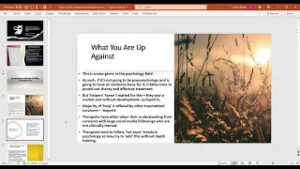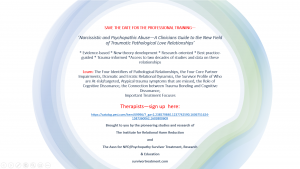Anxiety Triage – The 30-Second Check-In
Anxiety Triage begins with a 30-second check-in followed by one or more techniques that are easily done on the spot.
When you find yourself in the throes of an anxiety or panic attack, observe your physical sensations. What’s going on in your body?
- To the best of your ability, make grounded statements about your symptoms. “My neck muscles are tight,” is a grounded statement. “My neck muscles are unbearably tight” is not.
- Scan your body, starting with the crown of your head and moving down the neck, shoulders, back, torso, belly, hips, thighs, calves, and feet.
That’s the 30-Second Check-In. Perform this simple process and watch your anxiety attack begin to subside. It’s the key to Anxiety Triage, because it brings you back into the Creative Moment.
Once you’ve done a 30-Second Check-In, you’re ready to re-orient yourself and reclaim the energy trapped in the anxiety trance.
Now, pick one of the following techniques to completely break the hold of the anxiety attack.
Anxiety Triage Technique #1: What’s That Sound?
- Identify the sounds you hear, one at a time.
- Start by identifying the closest or more obvious sounds. Let’s say you’re driving in your car. So the first sound you identify is the radio. Listen to it for a moment, and pay attention to nothing else. Shift your attention then to the next sound, perhaps the whoosh of the wind rushing by your window. Next, listen to the sound of the tires on the road surface. Now direct your attention to the sound of the vehicles around you.
- Finally, see if you can hear all the sounds at once, without focusing on any one in particular.
When done, you will be completely present — and much calmer.
Anxiety Triage Technique #2: Name That Thing
- Name everything around you, speaking its name out loud.
- Start by identifying the closest or more obvious items. Back in the car again, you might start with the black steering wheel… the red speedometer… the blue car hood… the green pickup truck that just passed… a silver Mercedes… a white Toyota.
Continue until you have returned to a calmer state of mind.
Anxiety Triage Technique #3: Tapping
Tap several pressure points on the body until the anxiety attack subsides. (DO NOT attempt to use this technique while driving or while doing other tasks that need your full attention.)
Start by finding the sensitive spot between and just above your eyebrows. Using the middle finger of your right or left hand, tap that spot 32 times. Use even pressure.
- Now locate the tiny indentation in the eye socket just below your right eye. Gently tap this spot 32 times.
- Repeat with the left eye.
- Tap 32 times behind the right earlobe.
- Repeat with the left earlobe.
- Next, cup your right hand so all the fingertips touch. Find the spot on your sternum in the center of your body, in the location of the heart. Press that spot using the fingertips of your right hand with firm but comfortable pressure. Adjust the position until you feel a sudden release of tension in the shoulders.
Though this technique might seem a little odd, there’s nothing magical about it. You’re simply stimulating various pressure points and, in so doing, initiating the body’s natural relaxation reflex.
Other techniques:
- Learn diaphramatic breathing before it is needed so you are familiar with it and can use it when anxiety and panic attacks occur – https://www.youtube.com/watch?v=_7ySGgAFAAo
- Put your hands in cold water and direct your attention to how they feel. Keep your focus on your hands until the anxiety subsides.
- Color (free printable) mandalas available from http://printmandala.com/
- Use lavender essential oil or Aura Cacia “Panic Button” (found online or at Whole Foods). Take a warm bath. Focus on what the warm water feels like on various parts of your body as you breathe in the relaxing aroma of lavender.
- Stand in the grass in your bare feet. Focus on what that feels like.
(**If we can support you in your recovery process, please let us know. The Institute is the largest provider of recovery-based services for survivors of pathological love relationships. Information about pathological love relationships is in our award-winning book, Women Who Love Psychopaths, and is also available in our retreats, 1:1s, or phone sessions. See the website for more information.)






